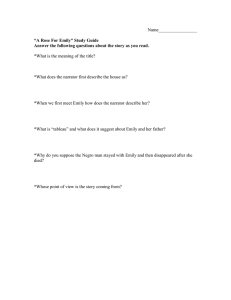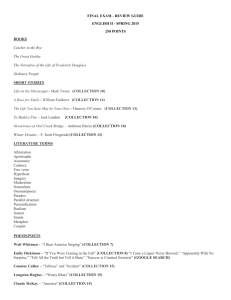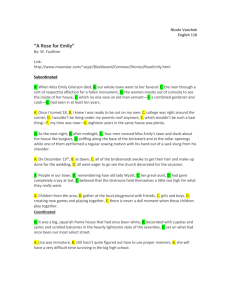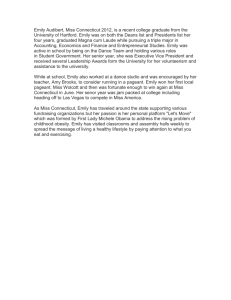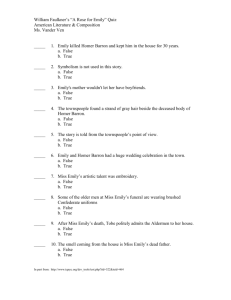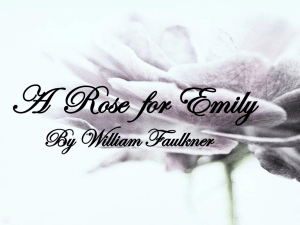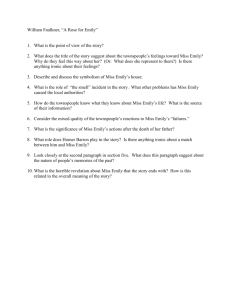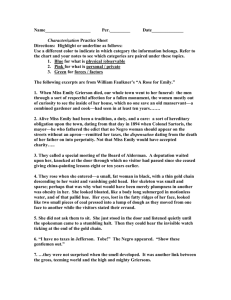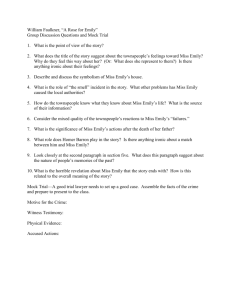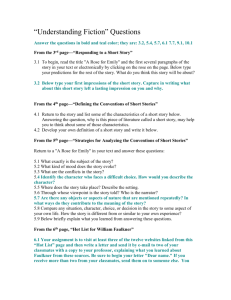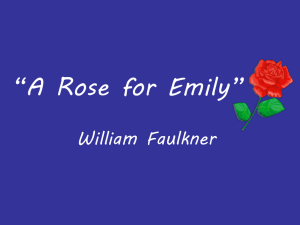Analysis Questions for A Rose for Emily.doc
advertisement
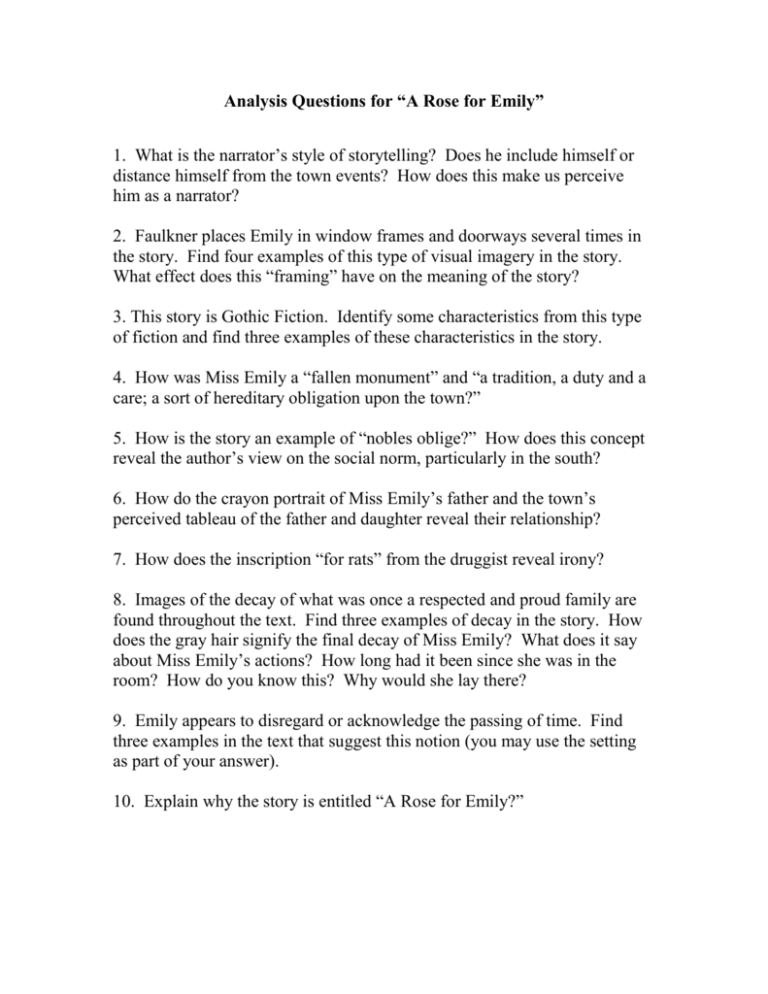
Analysis Questions for “A Rose for Emily” 1. What is the narrator’s style of storytelling? Does he include himself or distance himself from the town events? How does this make us perceive him as a narrator? 2. Faulkner places Emily in window frames and doorways several times in the story. Find four examples of this type of visual imagery in the story. What effect does this “framing” have on the meaning of the story? 3. This story is Gothic Fiction. Identify some characteristics from this type of fiction and find three examples of these characteristics in the story. 4. How was Miss Emily a “fallen monument” and “a tradition, a duty and a care; a sort of hereditary obligation upon the town?” 5. How is the story an example of “nobles oblige?” How does this concept reveal the author’s view on the social norm, particularly in the south? 6. How do the crayon portrait of Miss Emily’s father and the town’s perceived tableau of the father and daughter reveal their relationship? 7. How does the inscription “for rats” from the druggist reveal irony? 8. Images of the decay of what was once a respected and proud family are found throughout the text. Find three examples of decay in the story. How does the gray hair signify the final decay of Miss Emily? What does it say about Miss Emily’s actions? How long had it been since she was in the room? How do you know this? Why would she lay there? 9. Emily appears to disregard or acknowledge the passing of time. Find three examples in the text that suggest this notion (you may use the setting as part of your answer). 10. Explain why the story is entitled “A Rose for Emily?”
